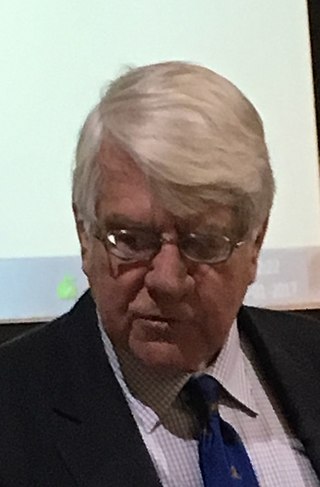Econometrics is an application of statistical methods to economic data in order to give empirical content to economic relationships. More precisely, it is "the quantitative analysis of actual economic phenomena based on the concurrent development of theory and observation, related by appropriate methods of inference". An introductory economics textbook describes econometrics as allowing economists "to sift through mountains of data to extract simple relationships". Jan Tinbergen is one of the two founding fathers of econometrics. The other, Ragnar Frisch, also coined the term in the sense in which it is used today.
Economic statistics is a topic in applied statistics and applied economics that concerns the collection, processing, compilation, dissemination, and analysis of economic data. It is closely related to business statistics and econometrics. It is also common to call the data themselves "economic statistics", but for this usage, "economic data" is the more common term.

Trygve Magnus Haavelmo, born in Skedsmo, Norway, was an economist whose research interests centered on econometrics. He received the Nobel Memorial Prize in Economic Sciences in 1989.

gretl is an open-source statistical package, mainly for econometrics. The name is an acronym for GnuRegression, Econometrics and Time-seriesLibrary.
The Econometric Society is an international society of academic economists interested in applying statistical tools in the practiced of econometrics. It is an independent organization with no connections to societies of professional mathematicians or statisticians.

EViews is a statistical package for Windows, used mainly for time-series oriented econometric analysis. It is developed by Quantitative Micro Software (QMS), now a part of IHS. Version 1.0 was released in March 1994, and replaced MicroTSP. The TSP software and programming language had been originally developed by Robert Hall in 1965. The current version of EViews is 13, released in August 2022.
Economic methodology is the study of methods, especially the scientific method, in relation to economics, including principles underlying economic reasoning. In contemporary English, 'methodology' may reference theoretical or systematic aspects of a method. Philosophy and economics also takes up methodology at the intersection of the two subjects.
The following tables compare general and technical information for a number of statistical analysis packages.
Sir David Forbes Hendry, FBA CStat is a British econometrician, currently a professor of economics and from 2001 to 2007 was head of the economics department at the University of Oxford. He is also a professorial fellow at Nuffield College, Oxford.

Neil Shephard, FBA, is an econometrician, currently Frank B. Baird Jr., Professor of Science in the Department of Economics and the Department of Statistics at Harvard University.

Orley Clark Ashenfelter is an American economist and the Joseph Douglas Green 1895 Professor of Economics at Princeton University. His areas of specialization include labor economics, econometrics, and law and economics. He was influential in contributing to the applied turn in economics.
The Journal of Applied Econometrics is a peer-reviewed academic journal covering econometrics, published by John Wiley & Sons. It focuses on applications rather than theoretical issues. It was established in 1986 and is published seven times per year. Its editor-in-chief is Barbara Rossi. Since 1994 it has required its authors to deposit a complete set of data into the journal's Data Archive, in order to enable the replication of empirical results published in the journal.

In econometrics and statistics, a structural break is an unexpected change over time in the parameters of regression models, which can lead to huge forecasting errors and unreliability of the model in general. This issue was popularised by David Hendry, who argued that lack of stability of coefficients frequently caused forecast failure, and therefore we must routinely test for structural stability. Structural stability − i.e., the time-invariance of regression coefficients − is a central issue in all applications of linear regression models.
SHAZAM is a comprehensive econometrics and statistics package for estimating, testing, simulating and forecasting many types of econometrics and statistical models. SHAZAM was originally created in 1977 by Kenneth White.

Jan Kmenta was a Czech-American economist. He was the Professor Emeritus of Economics and Statistics at the University of Michigan and Visiting Professor at CERGE-EI in Prague, until summer 2016.
John Denis Sargan, FBA was a British econometrician who specialized in the analysis of economic time-series.
Manuel Arellano is a Spanish economist specialising in econometrics and empirical microeconomics. Together with Stephen Bond, he developed the Arellano–Bond estimator, a widely used GMM estimator for panel data. This estimator is based on the earlier article by Arellano's PhD supervisor, John Denis Sargan, and Alok Bhargava. RePEc lists the paper about the Arellano-Bond estimator as the most cited article in economics.

LIMDEP is an econometric and statistical software package with a variety of estimation tools. In addition to the core econometric tools for analysis of cross sections and time series, LIMDEP supports methods for panel data analysis, frontier and efficiency estimation and discrete choice modeling. The package also provides a programming language to allow the user to specify, estimate and analyze models that are not contained in the built in menus of model forms.







